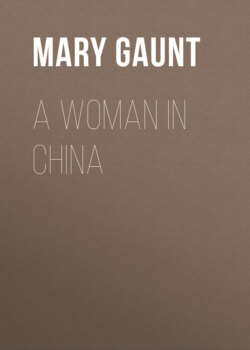Читать книгу A Woman In China - Mary Gaunt - Страница 12
На сайте Литреса книга снята с продажи.
CHAPTER III—THE WALLS AND GATES OF BABYLON
ОглавлениеTable of Contents
The mud walls of Kublai Khan—Only place for a comfortable promenade—The gardens on the walls—Guarding the city from devils—The dirt of the Chinese—The gates—The camels—In the Chien Men—The patient Chinese women—The joys of living in a walled city—A change in Chinese feeling.
Are they like the walls and gates of Babylon, I wonder, these walls and gates of the capital city of China. I thought so when first I saw them, and the thought remains with me still. Behind such walls as these surely sat Ahasuerus, King of Babylon; behind such walls as these dwelt the thousands of serfs who toiled, and suffered, and died, that he might be a mighty king. They are magnificent, a wonder of the world, and it seemed to me that the men of the nation who built them must glory in them. But all do not. I sat one day at tiffin at a friend's house, and opposite me sat a Chinese doctor, a graduate of Cambridge, who spoke English with the leisurely accent of the cultivated Englishman, and he spoke of these mighty walls.
“If I had my way,” said he, “they should be levelled with the ground. I would not leave one stone upon another.” And I wondered why. They shut out the fresh air, he said, but I wondered, in my own mind, whether he did not feel that they hemmed the people in, caged and held them as it were, in an archaic state of civilisation, that it is best should pass away. They can shut out so little air, and they can only cage and hold those who desire to be so held.
Kublai Khan outlined the greater part of them in mud in the thirteenth century, and then, two hundred years after, came the Ming conquerors who faced the great Tartar's walls with grey Chinese brick, curtailing them a little to the north, and as the Mings left them, so are they to-day when the foreign nations from the West, and that other Asiatic nation from the East, have built their Legations—pledges of peace—beneath them and, armed to the teeth, hold, against the Chinese, the Legation Quarter and a mile of their own wall.
Over fifty feet high are these Tartar walls, at their base they are sixty feet through, at their top they are between forty and fifty feet across, more than a hundred if you measure their breadth at the great buttresses, and they are paved with the grey Chinese bricks that face their sides. As in most Chinese cities, the top of the wall is the only place where a comfortable promenade can be had, and the mile-long strip between the Chien Men, the main gate, and the Ha Ta Men, the south-eastern gate—the strip held by the Legations—is well kept; that is to say, a broad pathway, along which people can walk, is kept smooth and neat and free from the vegetation that flourishes on most of the wall top. This vegetation adds greatly to its charm. The mud of the walls is the rich alluvial deposit of the great plain on which Peking stands, and when it has been well watered by the summer rains, a luxuriant green growth, a regular jungle, forces its way up through the brick pavement. The top of the wall upon a cool autumn day, before the finger of decay has touched this growth, is a truly delightful garden.
